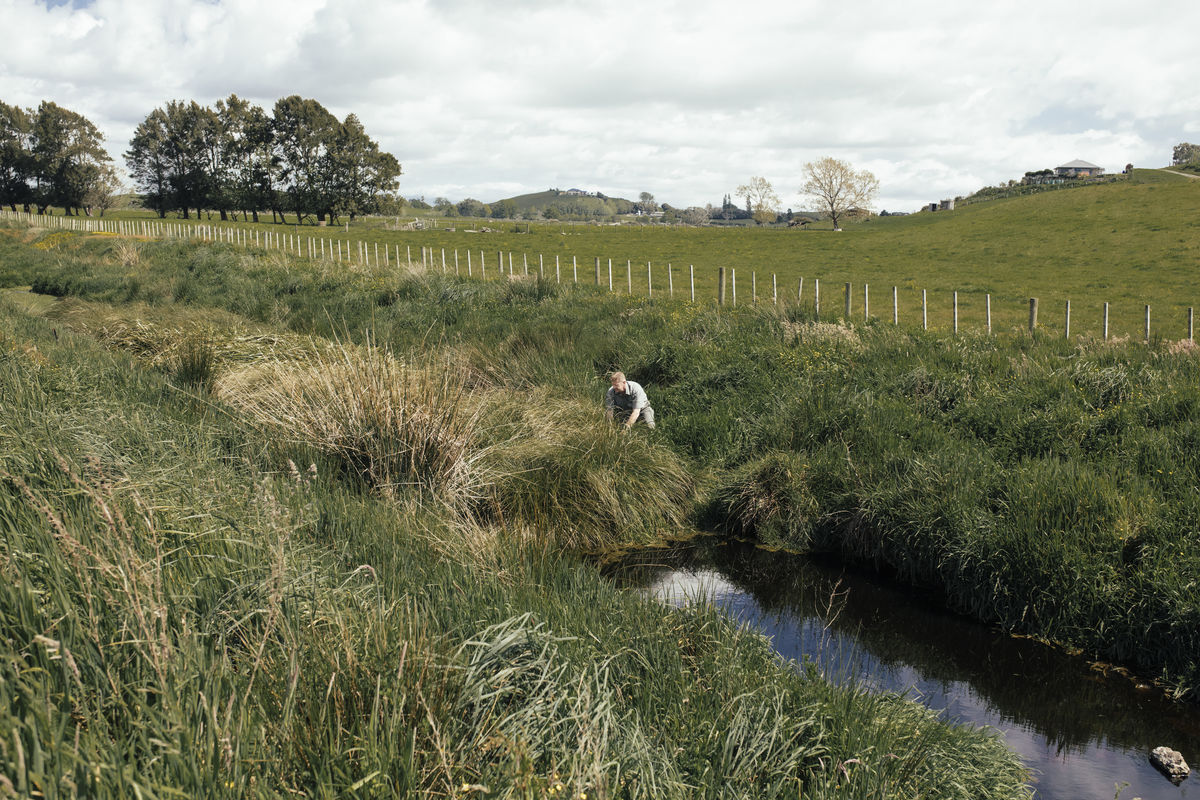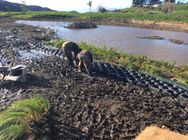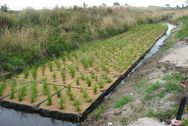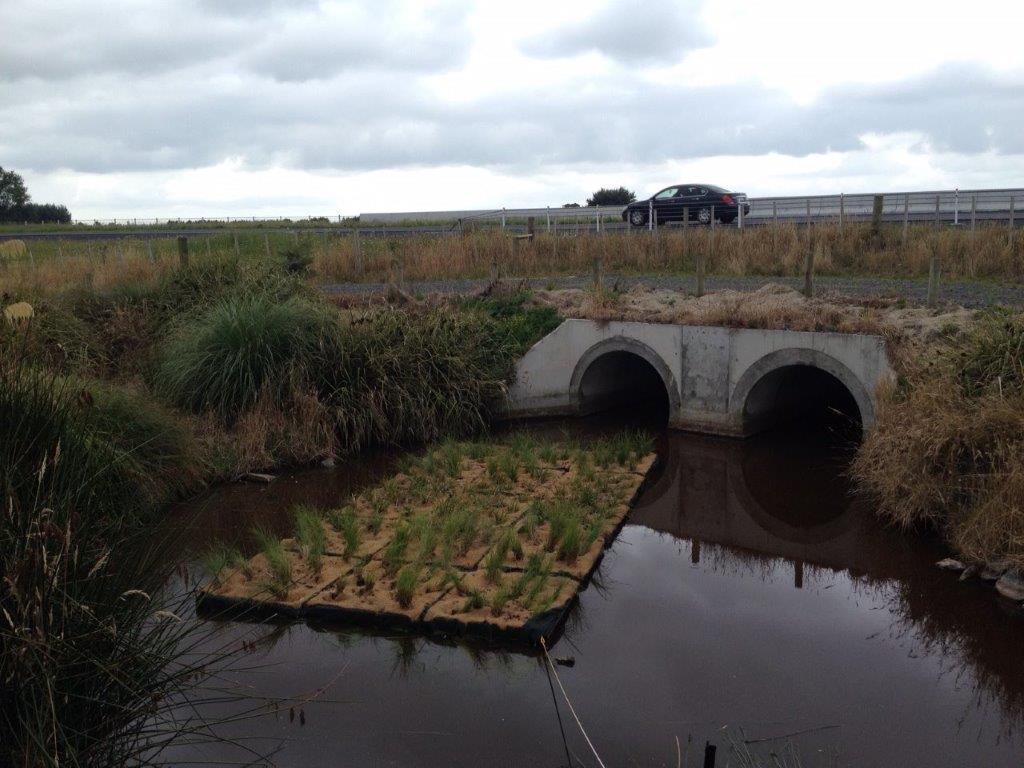
Floating Wetlands
What are floating wetlands?
Floating wetlands are a wetland 'raft' that float in a pond, lake or slow-flowing waterway. Unlike a conventional wetland which alternates between natural flooding and drying cycles, a floating wetland is immersed in water year-round. The floating wetland consists of aquatic plants, such as grasses, sedges or rushes found in wetlands, growing on an artificial mat floating in the waterway. Without roots growing into the ground, the wetland plants must get all their nutrient requirements from the water.
What was the purpose of the Living Water trial of floating wetlands?
Water flowing into Waikato’s Peat Lakes through agricultural drains and waterways can contain contaminants such as sediment, nitrogen and phosphorus. The purpose of the trial was to determine whether floating wetlands could effectively reduce the quantity of contaminants such as suspended sediment and nutrient concentrations specifically nitrates and phosphorus from adjacent grazed land, and to improve habitat for wetland birds and instream fish and invertebrates. Living Water began trialling floating wetlands in a farm drain by the Waikato Expressway that flows into the southern end of Lake Areare, one of the Peat Lakes in Waikato, in December 2015. The wetland consists of a series of interconnected plastic rafts 1.2 x 1 metres in dimension, with a total of 45 rafts forming a 60 square metre floating wetland. Each raft was planted with 13 plants (a total of 585 plants) of three species: Carex virgata, Carex secta and Cyperus ustalus. The wetland was anchored to the bank to stop it floating downstream, and baffles were installed upstream to direct water through the wetland.
Who could use floating wetlands?
Landowners with waterways with long, straight stretches, regional and district councils
Floating Wetlands Video
How do floating wetlands improve water quality?
The plants in the floating wetland absorb nitrogen and phosphorus through their roots effectively removing these contaminants from the water as they grow. Increased stream shading, sediment deposition and structure from the plants roots improve habitat for biodiversity. Once established, floating wetlands require only occasional maintenance to cut back any roots that grow into the river or lake bed and remove dead plant material above the water surface. By being positioned within existing waterways they have little or no impact on productive farming systems.
What did Living Water learn from the floating wetland trial?
During the first monitoring period (2016-2017), the floating wetland had a sporadic impact on contaminant concentrations with some improvements recorded. Sediments (suspended solids) were about 50% lower downstream of the floating wetland, and total phosphorus removal efficiency was around 50%. The impact on nitrogen removal was more variable. During the second monitoring period (2019-2020), contaminant concentrations varied considerably depending on season and water levels and were not reduced by the floating wetland. As the wetland matured, competition between the three species of grass resulted in high plant mortality. The decomposing plant material along with general leaf litter contributed nutrients into the water, accumulating trace elements (copper and zinc, potentially from the nearby expressway) in the sediments under the wetland.
The size of the floating wetland trialed was 60 square metres. While localized reductions in sediment and nutrients were observed, the small size of the wetland did not result in any appreciable difference to the water quality in the lake. We estimate that greatly increasing the floating wetland size to 800m2 would significantly increase the time for water to pass through the and for plant roots to absorb nutrients from the water.
This trial indicated floating wetlands could be beneficial in agricultural waterways, however they are not an ‘install and walk away’ tool as they need maintenance, specifically annual harvesting in late summer (March) to reduce the mass of organic waste material on the floating wetland. This would reduce added nutrients and enhance removal of nutrients by plant uptake. At the same time, any weeds on the floating wetland and its banks also need to be removed so they don’t decrease the treatment efficiency.
What happens next?
Living Water has concluded its trial of floating wetlands. Ngāti Apakura, one of our iwi partners, has an interest in building a floating wetland at Lake Ruatuna, another of Waikato’s Peat Lakes, from natural materials.


